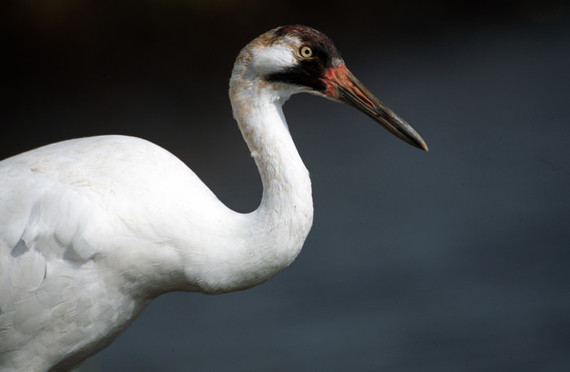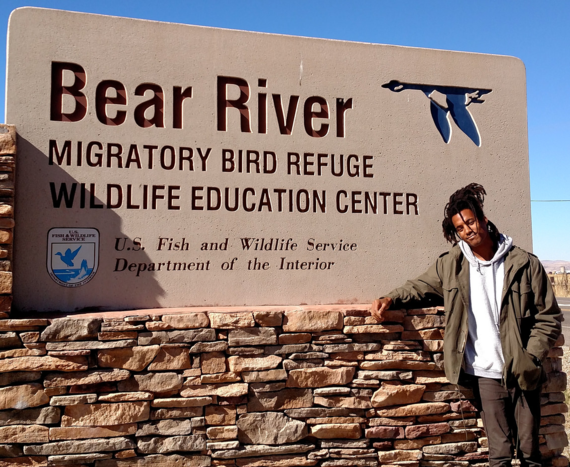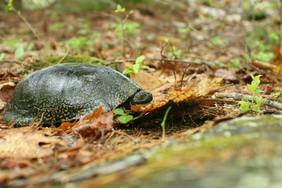
Whoop! Whoop! Wildlife Refuges Play Integral Role in Whooping Crane Recovery
The last wild migratory flock of whooping cranes – the Aransas-Wood Buffalo population – is gradually making a recovery and national wildlife refuges are contributing to this conservation success. Of the estimated 431 individuals in this population, 167 (nearly 40%) visited Quivira National Wildlife Refuge in Kansas as a stopover area during their 2017 fall migration. This total far exceeds the refuge’s record of 110 individuals recorded during fall 2016. The greatest number of individuals observed in a single day this fall was 66 on November 2, including 42 whooping cranes in one location. The refuge’s whooping crane fall migration began October 19 and ended December 5. In addition to whooping cranes, over 300 other bird species have been recorded at Quivira, including a wide variety of waterfowl, shorebirds, and migratory birds.
Nature’s Music Inspires Indie Rock Artist Conner Youngblood

New “Songscape” at Bear River Migratory Bird Refuge Connects Music, Wildlife, and Public Lands
In October 2017, indie rock artist Conner Youngblood visited Utah’s Bear River Migratory Bird Refuge for a very special Songscape. Song + Landscape = Songscape.
Bear River’s Songscape was coordinated in cooperation with Sustain Music & Nature, Inc., a nonprofit organization that aims to engage the music community in environmental stewardship. The organization’s Songscape retreats foster collaborative partnerships between land agencies and musicians. Conservation organizations, such as national wildlife refuges, host an artist to immerse them in the beauty and history of protected lands. Recording artists, in turn, create a song inspired by their personal experiences on those lands.
A music video is filmed on location, documenting the surrounding wildlife, habitats, and landscapes to connect audiences with the natural surroundings that inspired the artist’s music. Songscape songs are also donated to the hosting conservation organization. The songs aim to energize listeners and encourage them to value and visit these special natural places.
This is the Mountain-Prairie Region’s second Songscape. In 2016, River Whyless created a Songscape titled “Hold Me To Ya” during the folk band’s adventures visiting Seedskadee National Wildlife Refuge in Wyoming. The group’s music video features a variety of wildlife – including greater sage-grouse, moose, and waterfowl – and highlights outdoor activities, including hiking, fishing, boating, and birding.
Stay tuned for Conner Youngblood’s Songscape music video, which launches January 1, 2018. Learn more about Songscape: Bear Riverr Migratory Bird Refuge here: http://bit.ly/2BjCs3J
Did You Know?
 |
Long-lived Blanding’s Turtle Conservation a Slow But Steady ProcessThe rare Blanding’s turtle lives in freshwater wetlands; its historical range spanned from New York to Wyoming. This long-lived, medium-sized turtle can live over 70 years, but it doesn’t reach reproductive maturity for 20 years or more. Threats to its continued survival in the wild include habitat loss and degradation, road mortality, and collection. More: http://bit.ly/2uEnVwE and http://bit.ly/2AogPvx Photo: Blanding’s Turtle by USFWS |




